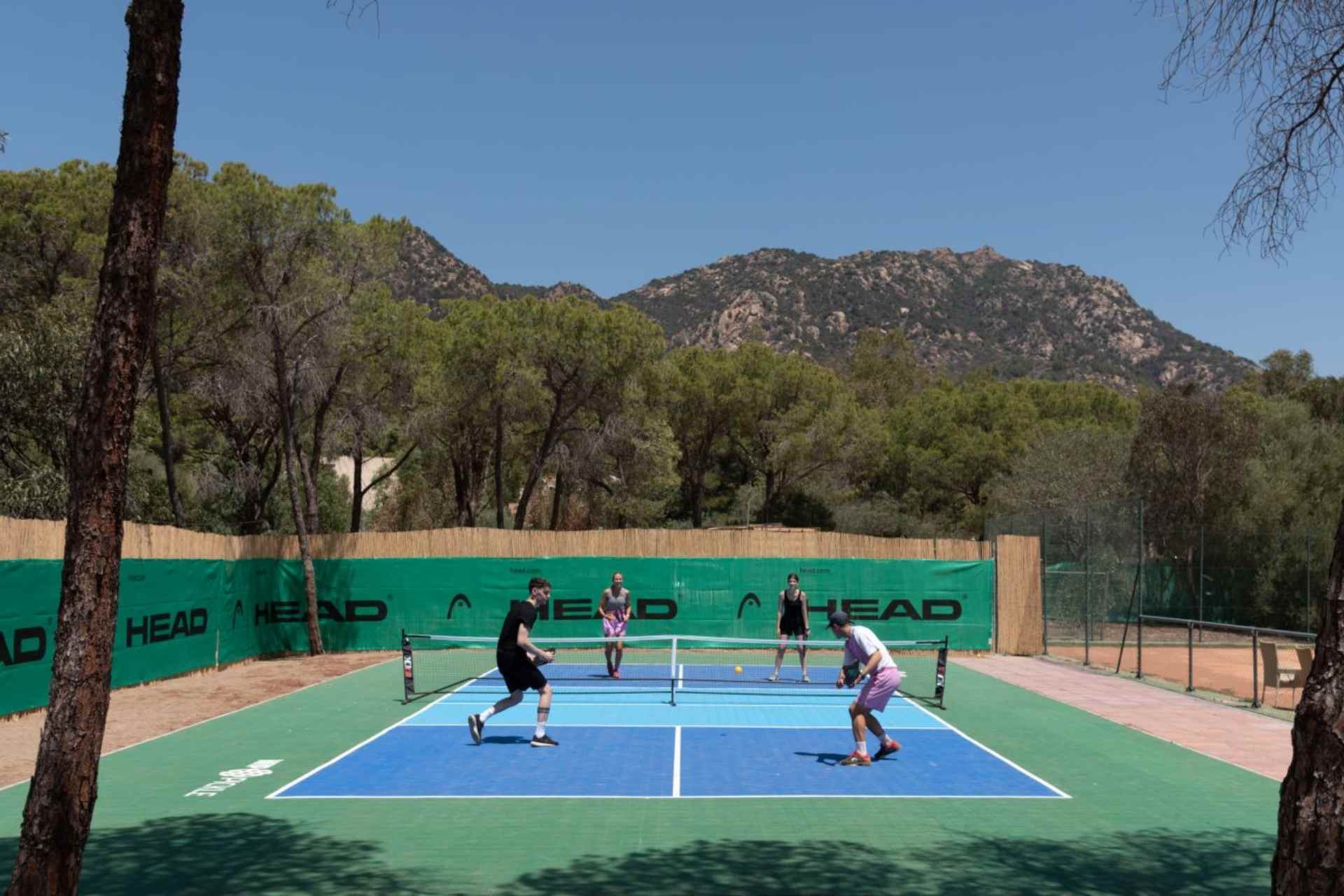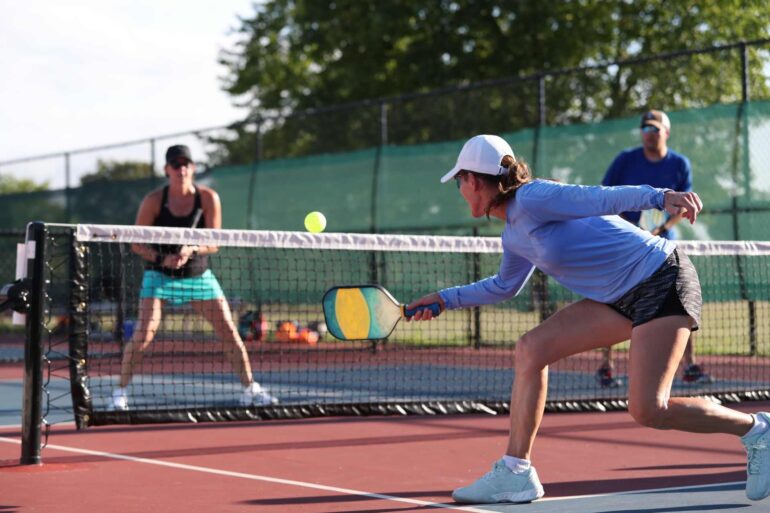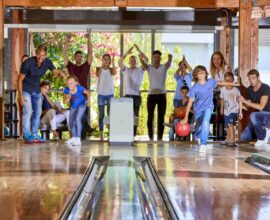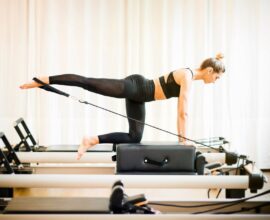Pickleball, rules and history of a dynamic sport
Discovering pickleball: rules, fun facts and how to play it
A dynamic and versatile sport discipline, mixing tennis, badminton and table tennis in a fun, exciting and accessible experience for all ages and levels of physical shape.
Perfect for those who want to move their body in a fun and challenging way, but also for those looking for a sport combining competition with socialization, pickleball is truly the most trending sport now.
Originated from the USA in the mid-60’s with an intuition of Joel Pritchard, member of the US Congress, and his two friends Bill Bell and Barney McCallum, today this hybrid sport between tennis, badminton and table tennis, to play in singles or doubles, is conquering more and more fans all over the world – and it is not difficult to understand why.
It’s in fact a sport accessible to people of all ages and levels of physical shape, with simple rules and a smaller court than those of other racket sports, ideal both for improving one’s physical health and spending time in company.
In its most popular format, it’s indeed played in doubles, adding a strong social dimension to the athletic aspect – communication and the ability to coordinate with your team partner are fundamental skills! However, the single version is also quite popular and appreciated, especially by those looking for more demanding challenges or wishing to increase the game intensity to test their limits.
In addition to this there’s the fact that pickleball promotes the development of several physical skills such as agility, coordination and reflexes, but also endurance, strength, and explosiveness, therefore matches well both to independent games and as a complement to other sports (it is no coincidence that it’s often considered preparatory to approach tennis later). Thanks to its versatility, it can be integrated into almost any weekly training routine, offering its fans the opportunity to improve athletic performance and have fun.
Short history of pickleball, from the origins to present
Pickleball was born in the summer of 1965 on Bainbridge Island, near Seattle, Washington. The creators of the sport, Joel Pritchard, Bill Bell and Barney McCallum, were looking for a way to entertain their families on the summer holidays and, finding nothing but a badminton net, a pair of table tennis rackets and a perforated ball similar to the one used in wiffle ball (a close relative of baseball), they decided to create a “hybrid” game, which immediately won over everybody.
Given this union of elements from different disciplines, according to some, “pickleball” comes from the so-called pickle boats, in rowing teams made up of rowers discarded by other crews. However, according to others, this neologism is instead related to Pritchard’s dog, called Pickles, who loved to chase the ball during games.
By the way, pickleball quickly became popular not only among racket sports enthusiasts, but also in American schools, so much so that it was included in the educational programs of some States as a physical activity for students.
The arrival of this sport in our country, or at least its diffusion, is much more recent: if the first Italian court dedicated to pickleball was built in Tocco da Casauria in the summer of 2017, the Italian Pickleball Association (A.I.P.) – now affiliated with both the International Pickleball Federation and the World Pickleball Federation – was founded in the same town, in the province of Pescara, only in 2018, the same year of the second edition of the Bainbridge Cup in Montesilvano, a famous intercontinental team competition.
But it was only in March 2023 that this dynamic and fun discipline was officially accepted by the Italian Tennis and Padel Federation (FITP). The last stop on this exciting journey, but only in chronological order, was the victory of the Italian tennis player Federico Pasquali, a former third-category amateur, in the over-50 world championships, giving him the golden ticket for admission to professional tournaments in the United States starting this year.
All that’s left to do is waiting for the new developments of a sport that continues evolving since day one, becoming today regulated and practiced worldwide, counting dedicated federations and tournaments, a large community of fans that keeps growing year after year and rules that are now well codified.

Pickleball rules: anything you need to know to begin
The basic rules of pickleball are few, quite simple and easy to understand. Here are the main ones to know, starting from the dimensions of the courts and advice for choosing the best racket, to learn the keys of the game.
Pickleball courts: dimensions and features
The pickleball court measures specifically 6.10 m in width and 13.41 m in length, like a badminton court, but significantly smaller than a tennis’s, contributing to the greater speed and dynamism of the matches. The net, essential for the game, is placed at a height of 86.36 cm in the middle and 91.44 cm at the ends, thus ensuring that balls can be played over it without particular difficulty.
Pickleball courts are then divided into three zones, each with specific game rules:
1. Non-volley zone (Kitchen): this zone extends for 2.13 m on each net side. Here, players cannot hit the ball in flight and so they must let it bounce before making a shot. A factor that makes the game more strategic, as it encourages players to take position more carefully in space and plan their next moves in advance;
2. Service Area: the service line is located at the end of the court, 6.10 m from the net. The service must be performed within this area and diagonally towards the opponent’s half of the court. This means that each player has a specific area for serving, and that position is crucial to the success of the game;
3. End and Side Lines: the end lines mark the end of the court, while the side lines define the horizontal limits. It’s key that players know these lines, as hitting balls outside them results in the loss of points.
Game space and surface and how to set the game
Pickleball courts can be made on different surfaces, including asphalt, concrete or synthetic floors. The important thing is that the surface is smooth and well maintained, to ensure a good bounce of the ball and safety for players. In many sports centers and clubs, pickleball courts are marked with distinctive colors to facilitate their identification, and it is common to find marked lines that define the service and non-volley areas, to help players follow the rules during the game.
Pickleball courts can be set for single play and team play (doubles). Although dimensions and rules are the same, the dynamics of the game vary significantly depending on the number of players.
Pickleball rackets: all the features and how to choose it
Pickleball rackets are smaller and lighter than tennis or badminton ones, designed to ensure greater precision, agility and a faster game. Their max length, including the handle, is indeed only 43 cm, while the width can reach 20cm. As for the weight, it can vary from 170 to 300 g, allowing players to react quickly on fast exchanges, while maintaining good handling.
For this reason, the choice of racket is relevant: lighter rackets favor speed while heavier ones make more powerful shots. Same goes for the choice of materials rackets are made. For example, wooden ones, the most traditional and cheapest, are robust and durable, but on the other hand they also tend to be heavier, making them less suitable for players looking for agility and speed. Graphite rackets are lighter and more reactive, with excellent control and speed, which is why this material is particularly appreciated by advanced players who want greater precision in their shots.
Carbon fiber is one of the most advanced and expensive materials for pickleball rackets, and combines lightness and resistance, so ensuring power and control. Carbon fiber rackets are perfect for players who want to optimize performances, while there are also others made with composite materials, such as polymers or ultra-light materials to offer a balanced mix of durability, power and control.
Another element to consider when choosing a pickleball racket is the grip (handling) which must be comfortable and firm, allowing players to maintain control during the game, but also reduce fatigue and the risk of injury, as well as improving shots precision and power. Grips are available in different sizes, ranging from 10 cm to 12 cm in circumference, to adapt to the size of each player’s hand.
Professional players also customize rackets to suit their playing style, using supplementary grips, or opting for rackets with different balances (head-heavy for more power or handle-heavy for better control).
Pickleball ball: holes and weight
The pickleball ball is a lightweight sphere, usually made of hard plastic and hollow inside. Its diameter varies slightly, but the standard size is about 7.3-7.6 cm, while the weight ranges between 22 and 26g, making it much lighter than tennis balls.
The most distinctive feature of the pickleball ball is certainly the presence of holes all over the surface. These holes, of variable size depending on the type chosen, are important for flight dynamics, as well as for the speed and stability of the ball during a match.
In particular, balls used for outdoor game generally have smaller holes and a slightly greater weight than those for indoor courts, plus a harder and more resistant surface. This design reduces the wind impact and increases flight stability, making outdoor games predictable and controlled.
Indoor balls instead have larger holes, to favor a slightly lower speed but greater control, making indoor games more technical and precise. They’re also usually softer, designed to bounce better on smooth surfaces such as parquet.
The bounce of a pickleball ball is indeed an aspect that directly influences game dynamics: being more controlled than a tennis ball, it also allows less experienced and athletic players to try the game without greater difficulty.
Pickleball: the basics rules
1. Service
The service is a key element of pickleball and must be practiced with extreme care. The serving player must hit the ball from low to high, ensuring that the racket hits the ball below the waist. In addition, the server must take position behind the baseline, throwing the ball diagonally into the opponent’s half of the court, avoiding the non-volley zone. This not only sets a pace to the game, but also provides strategic opportunities to score points.
2. Double bounce rule
A distinctive rule of pickleball is the so-called “double bounce rule”. After a service, the ball must bounce once in the opponent’s court before hitting it. The receiver must then hit the ball to make it bounce back into the server’s court. Only after these two initial bounces, players may hit the ball in volley. This rule encourages more tactical play and reduces the chance of quick hits that could make it difficult to receive.
3. Non-Volley Zone
The non-volley zone, often called “kitchen”, is a strategic area extending the first 2.13 m on each side of the net. In this zone, players cannot hit the ball mid-air; they must wait for it to bounce. This rule adds an extra layer of strategy to the game, forcing players to move and position tactically, avoiding situations to get too close to the net and risk losing points.
4. Scoring
Matches can be played up to 11, 15, or 21 points, with the need for the single player or team to get at least a 2-points advantage over their opponent to win. Only the player or team serving can earn points, making each service game extremely important. This unique way of scoring points pushes players maximize their opportunities on every service game, creating exciting and competitive game plays.
An excellent starting point if you want to try your hand at this unique sport for the first time, correctly learn its basics, main techniques and the right way to have fun in complete safety is surely to rely on a team of expert coaches, such as those of the brand new Pickleball Academy at Forte Village, one of the many excellent sports academies in the famous five-star resort located in Santa Margherita di Pula, right close to some of the most beautiful beaches in Sardinia.
Pickleball Academy: this trending game comes to Forte Village
Having fun with racket shots, learning pickleball essentials, and improving technique and game strategy is now possible at the exclusive Forte Village, the “most beautiful resort in the world” that has always made sport one of its great strengths, with cutting-edge playing courts and the best coaches in the world to guide everyone towards excellence.
In addition to the new Pickleball Academy, a new entry to the wide range of academies by Forte Village, there are also the Swimming Academy, where champions of the discipline such as Domenico Fioravanti and Martina Morcavcová will reveal students all the secrets to improve their swimming technique, but also the much-loved Tennis Academy, to become true tennis champions and, last but not least, the Mountain Bike Academy, providing children and adults the opportunity to test themselves on different routes in terms of difficulty and duration, winding through a variety of grounds, with the guidance of qualified instructors and national and international cycling legends, including Fabian Cancellara, Fabio Aru, Paola Pezzo and Filippo Pozzato.
And after an intense training session, what’s better than regenerating your mind and body with thalassotherapy, one of the top treatments by prestigious Acquaforte Thalasso & Spa, a true oasis of well-being within the uncontaminated nature surrounding the Resort, or delighting your palate with the interesting gourmet creations at many starred restaurants hosted here, including Belvedere by Giuseppe Molaro, Terrazza San Domenico by Massimiliano Mascia and Beachcomber by Heinz Beck.
For further information or for booking the next lesson at the Academy, please phone call to the number +390709218818 or write an email to holiday@fortevillage.com.
Do you want to try your hand at the dynamic and fun pickleball and experience a fairytale holiday in an authentic paradise? Discover Forte Village Resort in Sardinia






